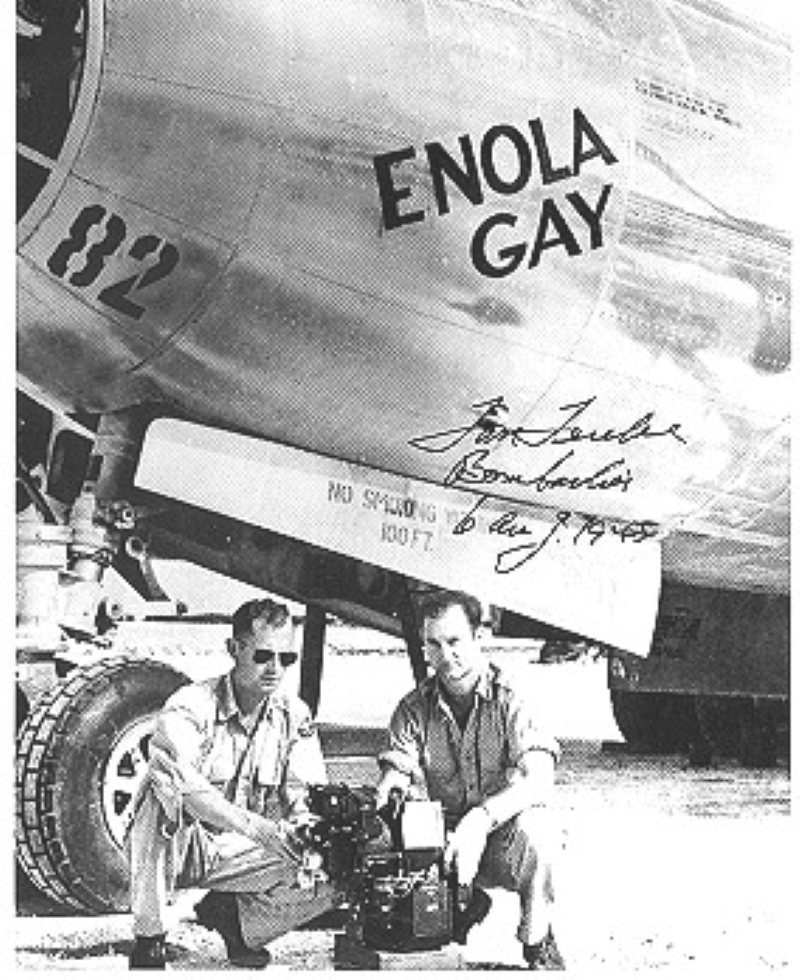With President Obama’s visit to Hiroshima, interest in the atomic bombings and the debate over them has spiked in the past month. The Atomic Heritage Foundation is currently developing new articles on the Manhattan Project and World War II to educate students, scholars, and members of the general public. The new content will provide historical context on the bombings of Hiroshima and Nagasaki, and information about the men who flew the missions. Our goal is to present a balanced narrative of Japan and the US in World War II, and to present information in a thoughtful and evenhanded manner so readers can consider and develop informed opinions.
You can now read the following on our website:
- An extremely detailed timeline of the bombings of Hiroshima and Nagasaki. The timeline begins on July 14, 1945, when the Little Boy bomb units left San Francisco aboard the ill-fated USS Indianapolis for Tinian, and concludes on September 2 with the Japanese official surrender on the USS Missouri.
- An annotated bibliography of the debate over the bomb. Some historians, often called “traditionalists,” tend to argue that the bombs were necessary in order to save American lives and prevent an invasion of Japan. Other experts, usually called “revisionists,” claim that the bombs were unnecessary and were dropped for other reasons, such as to intimidate the Soviet Union. Many historians have taken positions between these two poles. This list provides an overview of the historiography on the subject and the positions the historians take in their works.
- A list of the planes and crews that participated on the atomic bombing missions. As crews often rotated planes, it can be confusing to determine who flew on which plane for a particular mission; hopefully, this list will correct any misinformation.
- Japan’s atomic bomb program. During the war, Japan had a small atomic bomb program that made little progress toward building a bomb. The project was not a priority for the military, and the Japanese working on the bomb project had difficulty acquiring uranium.
Other articles to be written this summer will focus on Japan in World War II and the militarism espoused by Imperial Japan; Japanese treatment of Allied POWs, including the Bataan Death March; and Japanese atrocities in Asia and the Pacific. Another focus will be on the role of the 509th Composite Group, and expanding our article on the Manhattan Project at Wendover Airfield. We also plan to write articles on the internment of American citizens of Japanese descent in camps, the racism that existed on both sides during the war, and more on the bombings of Hiroshima and Nagasaki and the lasting impact on the survivors.
We are grateful to Clay Perkins and Joseph Papalia for their support of this project and for fact-checking some of the articles. Thanks also to retired scientist and artist David Wargowski for helping to develop the Hiroshima bombing timeline. Wargowski has created over fifty sculptures for his atomic art portfolio, including “The Pit Assembly,” and participated in two exhibitions, most recently at the Hiroshima Bank, to mark the 70th anniversary of the atomic bombings. He is also a member of the Atomic Photographers Guild.
Please consider donating today to support our work to develop additional educational resources to clarify these complex and controversial events that changed the course of world history, politics, culture and society.





